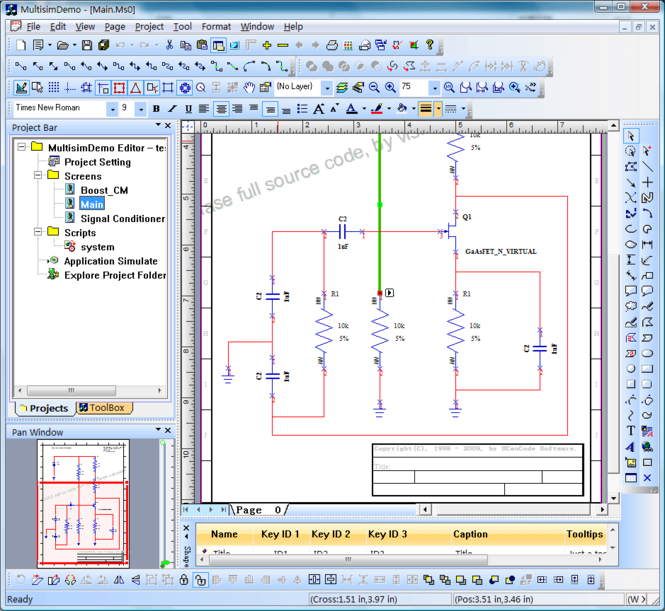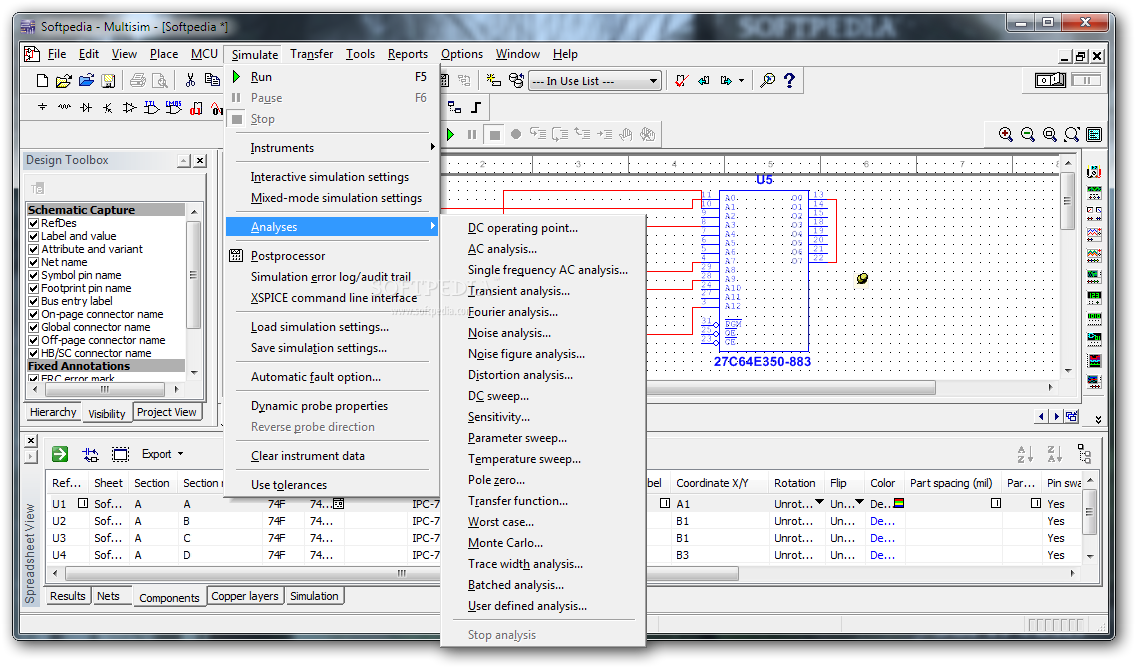
MULTISIM COMPONENT LIBRARY UPDATE HOW TO
You will learn how to create this component in this tutorial. In this package, both sections share power and reference voltage connections. The THS7001 is a programmable gainĢ 2 amplifier (PGA) with a separate pre-amplification stage presented in a single integrated circuit (IC) package. An example of a multi-section component is the Texas Instruments THS7001. Letters, increasing from A-Z, enumerate the devices within multi-section components.

Examples of multisection devices include logic gates or operational amplifiers. A multisection component is a component that has multiple gates or devices per chip. Single Section versus Multisection Components A single-section component is any component that has a single device per chip. This footprint can be added to the Multisim database to define a custom component.

This landpattern is created manually so as to precisely define the shape, size, and dimensions of a Surface Mount Device (SMD). Part 2 of the component creation articles, entitled Creating a Custom Component in NI Ultiboard, outlines how to create a custom Ultiboard landpattern for layout. Multisim also allows users to create simulation-only or layout-only components. Many components are easier to create and not all steps outlined are required under most circumstances. You will create a part with two schematic symbols, two models, but only one footprint.

In the interest of completeness, you will learn how to create an advanced component with two sections. Steps in the creation process include: Entering component information Selecting a footprint and the component configuration Selecting and/or editing the component symbol Setting pin parameters Mapping the symbol pins to the footprint pins Selecting the simulation model Mapping the symbol pins to the model pins Saving the part in the database The tutorial steps you through the process of creating a simulation and PCB layout compatible component. Components details include symbol and optionally pin, model, and footprint information. The Component Wizard is the primary tool used to create custom components, and it walks you through all of the steps required to create a new component.

You will create the component and then verify its operation. The purpose of this tutorial is to explain how you can create your own components for simulation and/or Printed Circuit Board (PCB) layout from within Multisim.
MULTISIM COMPONENT LIBRARY UPDATE SERIES
Table of Contents Introduction Step 1: Enter Initial Component Information Step 2: Enter Footprint and Package Information Step 3 - Enter Symbol Information Step 4: Set Pin Parameters Step 5: Set Mapping Information between Symbol and Layout Footprint Step 6: Select the Simulation Model Step 7: Map Symbol Pins to the Model Nodes Step 8: Save Component into the Database Step 9 - Testing the New Component in Multisim Introduction This tutorial is the first in a series of articles on component creation in NI Multisim and NI Ultiboard. Creating a Custom Component in NI Multisim and Creating a Custom Component in NI Ultiboard are your resource on how to intuitively and quickly learn how to create your own custom components. The highly flexible database manager makes it easy to add a new SPICE simulation model, to a custom defined schematic symbol which can then transfer an accurate footprint to layout. Document Type: Tutorial NI Supported: Yes Publish Date: Creating a Custom Component in NI Multisim Overview NI Multisim and NI Ultiboard provide an integrated platform to design, simulate and lay out a complete Printed Circuit Board (PCB).


 0 kommentar(er)
0 kommentar(er)
